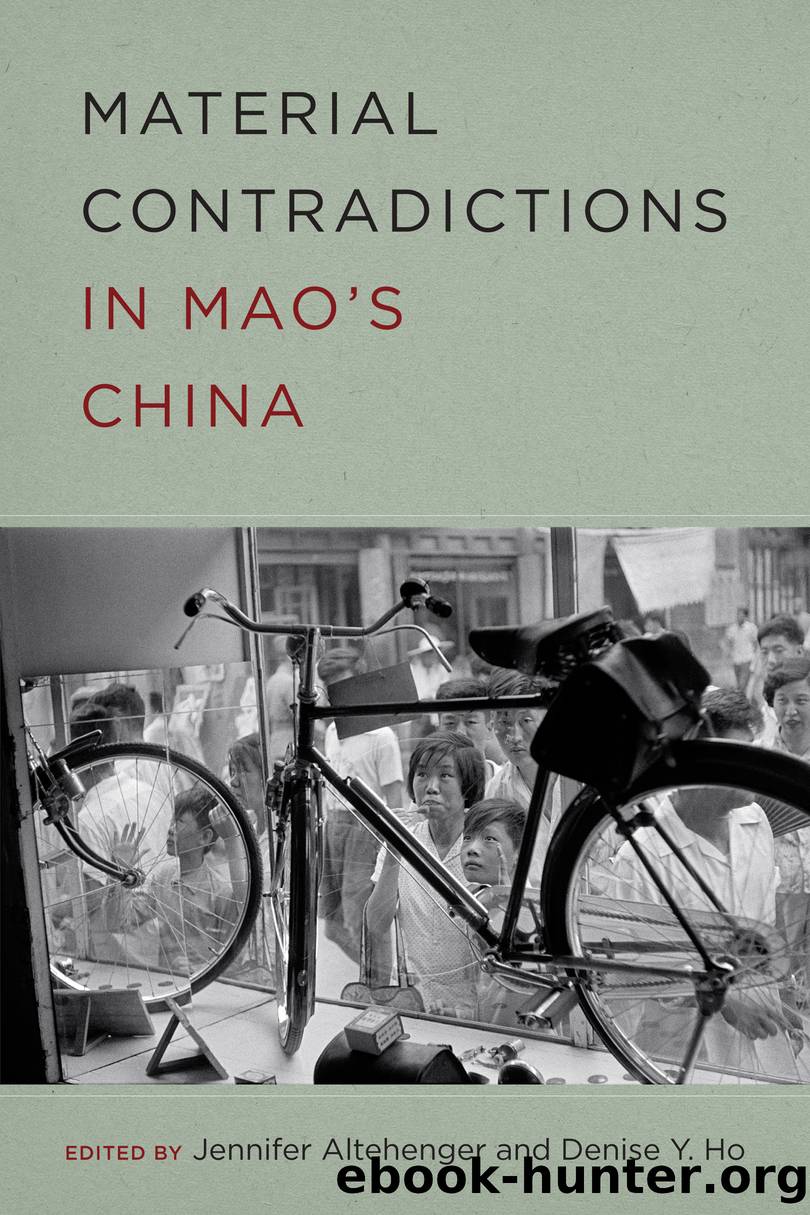Material Contradictions in Mao's China by Jennifer Altehenger;Denise Y. Ho;

Author:Jennifer Altehenger;Denise Y. Ho;
Language: eng
Format: epub
Publisher: Lightning Source Inc. (Tier 3)
TRAVELERS AND BAGGAGE
The 1950 imposition of border controls between Hong Kong and China limited travel and made family visits less frequent. China Customs noted that with the need for a frontier pass, the number of Hong Kong travelers decreased from over ten thousand visits a day to one thousand, a number that halved again in 1952 as a result of the Three-Antis and Five-Antis Campaigns.25 A decade later, in the first year of the Hong Kong Department of Immigrationâs existence, legal border crossings for 1961â62 numbered 418,036 from China and 408,811 to China, the vast majority being Hong Kong people with reentry permits.26 Individuals continued to cross the border for significant events, such as the funeral of a parent.27
A moment of loosening restrictions demonstrates the pent-up demand for travel. In 1956, both governments decided to take the occasion of Chinese New Yearâand for the Chinese, two separate exhibitions, on agricultural products and on Czechoslovakiaâs socialist constructionâto lift controls. As of February 10, the Hong Kong government did not require its residents to apply for a frontier pass. On the Chinese side, Guangzhou established a special committee to welcome Hong Kong and Macau âcompatriotsâ (tongbao), making arrangements to facilitate their travel: visitors could obtain tickets to the exhibitions at various Hong Kong outlets; upon registering with local police, they could get temporary ration coupons for grain, oil, and sugar, and their exhibition tickets could even serve as discount coupons for hotels, food stores, and restaurants.28
In addition to newspapers and word-of-mouth, visitor guidebooks from the period reveal how one embarked on a journey to China. One guide, which may have been published before the 1956 Chinese New Year exception, explained to a prospective traveler where to apply for the frontier pass, and what information was needed. Hong Kong identity cards would be stamped upon crossing at Lo Wu (Luohu), and a note to the reader explained that this stamp was not importantâperhaps travelers worried that the stamp would cancel the ID card.29 Once the stamp was obtained, the traveler could walk across the border to Shenzhen, where he had to fill out a letter of introduction, which was to be stamped by local authorities at his destination. This letter was necessary for applying for a temporary residence permit and any ration coupons, and the requisite stamp was required upon exiting China at the end of the trip.30 After this, one could change money, pass through luggage inspection, and enter Shenzhen Station, where a cup of tea cost one jiao (four cents) in 1958.
Though the guidebooks varied in their political positions, they all addressed a central concern for any traveler: what could be carried into China, and what could be brought out. For example, in the guidebook published in 1956 by Hong Kongâs Xinwanbao, a pro-PRC daily newspaper, one finds a straightforward outline of customs regulations. The guide reprinted an official notice from Guangzhou, which stressed that visitors could only carry daily use items for their own individual consumption, that contraband was forbidden,
Download
This site does not store any files on its server. We only index and link to content provided by other sites. Please contact the content providers to delete copyright contents if any and email us, we'll remove relevant links or contents immediately.
| Central Asia | Southeast Asia |
| China | Hong Kong |
| India | Japan |
| Korea | Pakistan |
| Philippines | Russia |
The Sympathizer by Viet Thanh Nguyen(4095)
The Rape of Nanking by Iris Chang(4023)
World without end by Ken Follett(3345)
Ants Among Elephants by Sujatha Gidla(3279)
Blood and Sand by Alex Von Tunzelmann(3055)
Japanese Design by Patricia J. Graham(3000)
City of Djinns: a year in Delhi by William Dalrymple(2435)
Foreign Devils on the Silk Road: The Search for the Lost Treasures of Central Asia by Peter Hopkirk(2388)
Inglorious Empire by Shashi Tharoor(2345)
The Queen of Nothing by Holly Black(2318)
In Order to Live: A North Korean Girl's Journey to Freedom by Yeonmi Park(2302)
India's Ancient Past by R.S. Sharma(2295)
Tokyo by Rob Goss(2292)
India's biggest cover-up by Dhar Anuj(2245)
Tokyo Geek's Guide: Manga, Anime, Gaming, Cosplay, Toys, Idols & More - The Ultimate Guide to Japan's Otaku Culture by Simone Gianni(2239)
The Great Game: On Secret Service in High Asia by Peter Hopkirk(2228)
Goodbye Madame Butterfly(2162)
Batik by Rudolf Smend(2007)
Living Silence in Burma by Christina Fink(1977)
